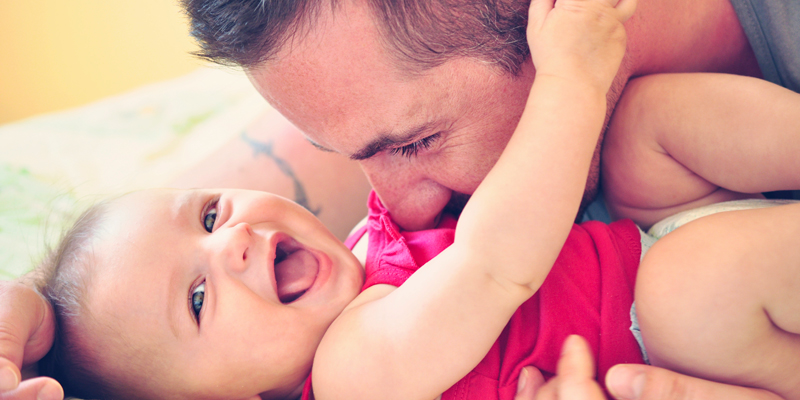
Receptive Language Skills: Language, Emotions, and Your Baby
Your baby is developing stronger Receptive Language skills by 3-6 months. That is, she will begin to react to hearing her own name, and she may respond to speech by smiling, looking into your eyes, or looking for the source of a sound if it’s not in sight. But one of the most fascinating developments she will experience at this age is her growing ability to tell apart the emotions behind your conversations together.1 At 3-6 months, your baby’s Receptive Language abilities will actually develop alongside her growing Self-Concept.
(SPECIAL OFFER: Sign up for Playful Bee’s Bee Well developmental learning program to give your baby the best start in life. The first 10,000 children enroll for FREE! Sign up today.)
By learning to understand herself and how she feels, your baby will also be able to tell how you are feeling, just by hearing the tone of your voice and seeing your facial expressions.2 So if you are feeling upset, calm, excited, or just plain happy when you speak to her, she will be able to understand and relate to your emotions. This is a stepping stone toward developing her social emotional skill of Empathy for Others.
Play Tips for Developing Receptive Language Skills:
Do you want to know how you can support your baby’s development of these Receptive Language skills at this age? It’s easy! Read on for some simple tips to incorporate into your daily play time together.
- Use your baby’s name whenever possible. Your baby will begin to understand that she is her own person when you “personalize” all of your conversations and experiences together. Use her name every time you speak to her, and for fun, try using her name for characters in nursery rhymes and songs.
- Use exaggerated facial expressions and tones of voice to show emotions. One of the best ways you can help your infant understand emotions is to use emotion-related words and contrasting tones of voice to describe how you are feeling. For instance, you could say “Mommy is feeling sad because she bumped her toe. Ouch! The boo-boo on my toe makes me feel sad.”
- Put a name to your baby’s emotions as they occur. For example, say things like “I can tell that you’re happy to see Daddy!” or “You look tired; are you ready for a nap?” This will help your baby figure out how she feels, understand different emotions, and more easily sense other people’s feelings.
(SPECIAL OFFER: Sign up for Playful Bee’s Bee Well developmental learning program to give your baby the best start in life. The first 10,000 children enroll for FREE! Sign up today.)
Developmental Milestones:
Has your baby achieved the following Receptive Language developmental milestones yet? If yes, check off all the skill(s) he has already mastered to date using Playful Bee’s developmental milestones tracker. It’s absolutely FREE and easy to use, just click HERE!
- Responds to own name.
- Distinguishes emotions by tone of voice.
Sources:
1Hamilton, Jon (2010). Infants Recognize Voices, Emotions by 7 Months. National Public Radio. Retrieved December 13, 2013 from http://www.npr.org/templates/story/story.php?storyId=125123354.
Playful Bee
Latest posts by Playful Bee (see all)
- Have a Super Fortune Cookie Friday! - February 9, 2018
- All Kinds of Shapes: Your Child Is Learning Simple Shapes, and Drawing Them Too! - November 13, 2017
- Fishing for Sneakers: Create your own Hand-Eye Coordination Fun - November 11, 2017

+ There are no comments
Add yours